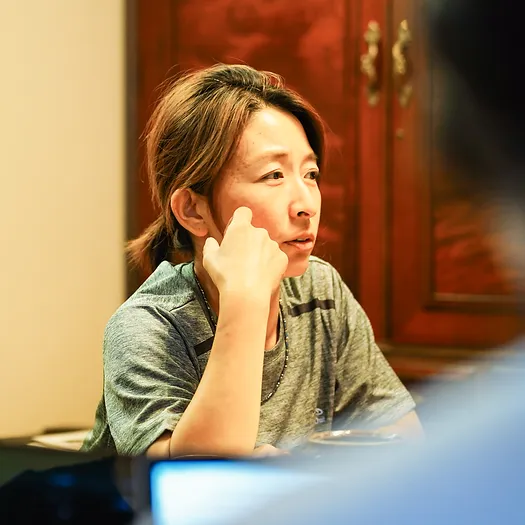Embracing Diversity: Redefining Beauty Standards in Japan's Fashion Industry
- 章子 今井
- 2024年1月28日
- 読了時間: 4分
更新日:2024年1月28日
June 21, 2023
Akari Kanaya
Since Japan is an island country with little to no diversity compared to countries combined with various cultures, skin colors, and body shapes, it is sometimes difficult for people in Japan to embrace their bodies as it is. It leads people to have toxic habits of trying to “fit into” society.
Japanese Beauty standard
Double eyelids, pale smooth skin, slim body. All of these beauty standards still dictate Japanese people’s mindset till this day. Especially in today’s world, where people scroll on their phones to pass time, people are comparing one another’s looks, outfits, skin, hair, styles subconsciously. People would often catch themselves comparing their life to others who they don’t even know. Most of the time, the contents people see online relies on digital manipulation and retouching techniques. Looking at unrealistic photos makes individuals’ flaws and insecurities become too aware for them to feel confident in themselves.
Lack of self-confidence has a large impact on mental health, based on the research by the Mental Health Foundation, higher levels of body dissatisfaction is connected to worsen an individual's overall quality of life, increase psychological distress, and a higher risk of engaging in unhealthy eating behaviors and developing eating disorders. Based on the Mental Health Foundation’s survey done in 2019 in the United Kingdom, 69% of adults said that they had ever felt anxious (34%) or depressed (35%) because of their body image. Once they get in a vicious cycle of self-doubt, self-punishment, and depression, there will be an uphill battle of journey trying to get out of it. According to Fumi Hayashi, an associate professor at Kagawa Nutrition University, social media has pushed "mistaken societal standards that being thin is ideal".
Fashion Industry’s Responsibility
The world is getting more globalized, and Japan is slowly but surely getting diverse. Inclusion holds significance as it is necessary to recognize every individual as equal. Fashion industry has a critical role in order to create a more inclusive Japanese society, since fashion has the power to make people feel good about themselves and gain confidence. Fashion industry could help encourage people to be able to enjoy fashion regardless of the size of their bodies. However, the beauty standards get in the way of achieving this ideal situation.

Even though the beauty standards in each region look different, each society has set unrealistic beauty standards for people to pursue under societal pressure. Beauty standards encompass the societal expectations that define what is considered visually appealing. Most people are trying to achieve beauty standards to fit into society, or to feel better about themselves by their appearance. Pursuing the beauty standards can be toxic when you are still learning about yourselves, not knowing your own worth. Unfortunately, the fashion industry is complicit to encouraging people to fit into unrealistic beauty standards. One of the examples of it being them not being size inclusive enough for their customers. If the fashion industry cares about customers enjoyment through fashion experience with their products, it is their responsibility to promote diversity and inclusion. It can also create an opportunity for the apparel industry to improve their brand image and gain more loyal customers. This opportunity can also easily become a risk for their reputation if they are considered not being respectful to everyone.
Size Inclusivity in Uniqlo

Uniqlo is one of the biggest Japanese fashion brands in the world that has 2,394 stores worldwide. In the corporate philosophy of Uniqlo’s parent company Fast Retailing, the brand philosophy “Made for All” portrays its clothing as inclusive, going beyond age, gender and ethnicity, all other means of defining people. Yet, Uniqlo does not carry size xs, xxl, 3xl in the store, it is only available online. Now, if they do not have particular sizes of stock in a store, can they still say that their clothes are “Made for All''? Although the dilemma of balancing supply and demand while being size inclusive might be a challenge for the fashion industry, there’s no better feeling than going shopping and finding a piece of clothing that fits perfectly regardless of the sizes. Mannequins in Uniqlo stores are all the same height, width as well. It is all unified even stores in the United States, in a country with developing size inclusivity. Skinny and tall body types are not the standard but only one of the body types.
In recent times in the United States, there has been a growing trend in the industry towards embracing body diversity, as exemplified by celebrities such as Beyonce and Rihanna. Both of these influential figures own brands that prioritize inclusivity by employing models of various sizes and ethnic backgrounds to represent the woman people see everyday. They showcase realistic body types rather than promoting unrealistic body types, encouraging customers to embrace their natural selves. Uniqlo’s US branch shall follow the trend and lead Uniqlo to become a more inclusive and diverse company. Adopting various sizes of mannequins could be a start, hiring models with different backgrounds, body types will lead them to have a positive effect on promoting inclusivity.
Introducing inclusion by the fashion industry, people can learn that size is just a number on a label and it does not define them. If people can start to feel comfortable in their own skin, inclusivity can spread all over the world.


